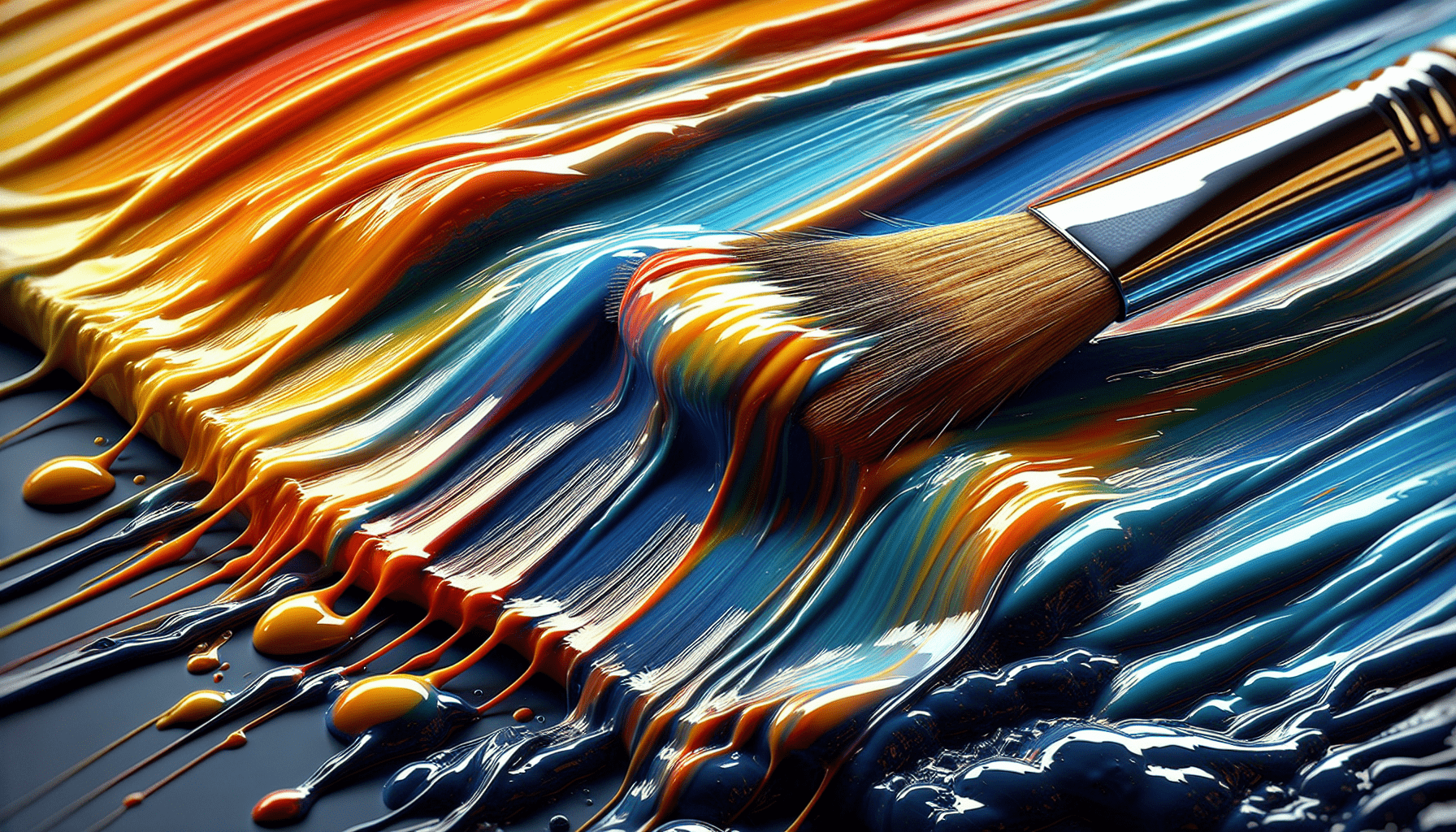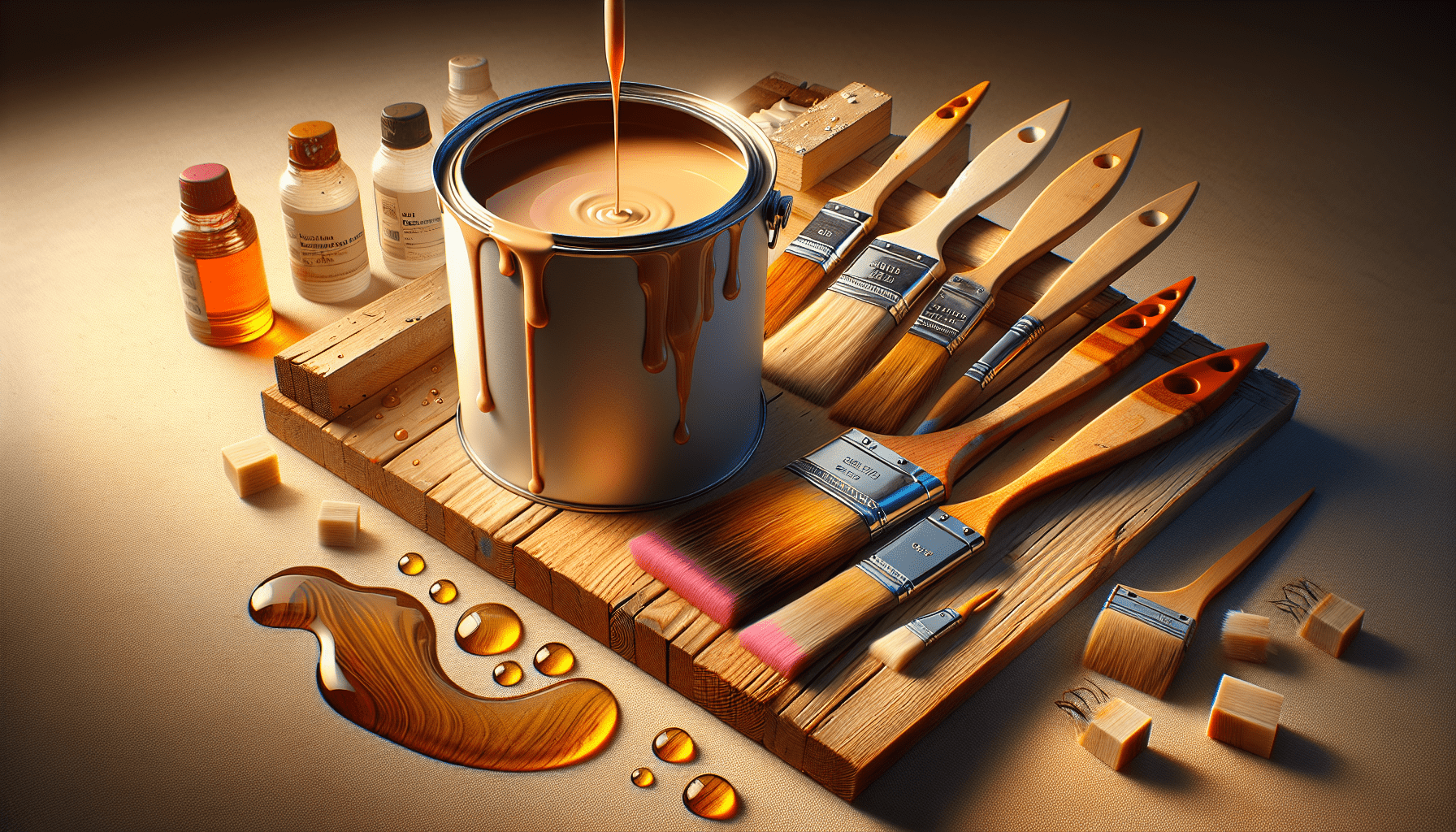In the realm of painting, the tools you choose can have a significant impact on the final result of your artwork. The article “Can I Use Acrylic Brushes For Oil Paint” aims to shed light on this controversial question that many artists grapple with. Painting with oil may seem elusive, constantly challenging painters to rethink their understanding of their tools. Acrylic brushes are commonly available and they are known for their versatility. But does this versatility extend to their use with oil paints? This is exactly what this informative piece seeks to explore, equipping you with knowledge that could potentially elevate your artistic skills.

Introduction
As an artist, the tools you use in your artistry mean as much as the finished piece. The materials you choose can have a profound effect on your work’s final outcome. Two of the most popular mediums artists use are acrylic and oil paints. Both of these paints have unique characteristics and require specific tools for the best results. This article aims to explore the differences between each type of paint, including the brushes used with these paints, and particular focus will be given to the use of acrylic brushes for oil paint.
Understanding the differences between acrylic and oil paints
Acrylic and oil paints are fundamentally different. Acrylic paints are water-based and dry relatively quickly. They are known for their vibrant and sharp colours. On the other hand, oil paints are oil-based and take significantly longer to dry, but offer a more luminous and richer color depth.
Importance of using appropriate brushes for each type of paint
The brush you use to apply your paint plays a critical role in the overall outcome of your artwork. Each paint type has corresponding brushes because they each have unique properties that require specific bristles.
Characteristics of Acrylic Brushes
Acrylic brushes play an essential role in how stunning your acrylic paintings will turn out. Their features make them more suited to the characteristics of acrylic paints.
Bristle types used in acrylic brushes
The bristles in an acrylic brush are conventionally made from synthetic materials like nylon and polyester. These materials can withstand the rigidity and quick-drying nature of acrylic paints.
Shapes and sizes of acrylic brushes
Acrylic brushes are available in a variety of shapes and sizes to create different strokes and details. Brushes can be flat, round, filbert, fan or angle; each offering a different touch to your artwork.
Handling and care of acrylic brushes
After using an acrylic brush, it is recommended to clean them straight away with warm water and soap to avoid the paint from hardening on the bristles. Dried paint can damage the bristles and affect your next painting session.
Characteristics of Oil Brushes
Oil brushes are tailored to handle the slow-drying and denser qualities of oil paint.
Bristle types used in oil brushes
Oil brushes usually have either natural hair or hog bristles. These bristles can endure the thickness of oil paints and help to spread the paint more evenly.
Shapes and sizes of oil brushes
Similar to acrylic brushes, oil brushes come in different shapes and sizes. Artists can choose brushes based on the technique they wish to use such as glazing, blending or detailing.
Handling and care of oil brushes
Oil brushes require more care compared to acrylic brushes due to the nature of the oil paint. After the painting session, clean them with turpentine or mineral spirits, followed by soap and water.
Compatibility between Acrylic Brushes and Oil Paint
Many artists might wonder whether they can use the same brush for acrylic and oil paints. This question has a somewhat complicated answer.
Can acrylic brushes be used for oil paint?
Theoretically, one can use acrylic brushes with oil paint. However, due to the difference in the qualities of paint both need and the care required for the brushes, using them interchangeably could lead to complications.
Risks and limitations of using acrylic brushes for oil paint
The synthetic bristles of acrylic brushes may struggle with the thickness and slow drying nature of oil paints. In addition, cleaning an oil-based paint off of an acrylic brush can be challenging and, if not done correctly, could damage the bristles.

Factors to Consider
When thinking about using acrylic brushes for oil paints, several factors should be considered.
Paint texture and consistency
Considering the thickness and slow drying nature of oil paint, acrylic brushes might not give optimal results when used with oil paints.
Drying times
The quick-drying nature of acrylic paints versus the slow drying nature of oil paints can affect brush health if brushes are not properly cleaned and handled.
Viscosity and thickness
The thickness of oil paints may make it challenging for synthetic bristles of acrylic brushes to handle.
Chemical reactions between paint and brushes
Oil paints need turpentine or mineral spirits for cleaning, which might have an adverse effect on the synthetic bristles of acrylic brushes.
Surface damage and brush bristle deterioration
Incorrect use and cleaning of brushes can lead to surface damage on the painting and deterioration of the brush bristles.
Potential Issues with Using Acrylic Brushes for Oil Paint
There are potential issues you may run into if acrylic brushes are used for oil paint.
Brush bristle damage
Ana inappropriate cleaning process could result in damage to your acrylic brushes when used with oil paints.
Difficulty in achieving desired effects
Due to differences in brush and paint characteristics, it might be challenging to achieve the desired effects when using acrylic brushes with oil paints.
Cleaning challenges
Properly cleaning oil paint off of acrylic brushes can be tricky and could result in damage if done incorrectly.
Contamination of color pigments
Failure to thoroughly clean brushes after use could lead to contamination of color pigments for your next painting.
Inconsistencies in paint application
Using the wrong brush for a certain type of paint can result in uneven paint application and a reduction in the painting’s quality.
Alternative Options
Concerning the potential issues of using acrylic brushes with oil paints, artists can consider alternative options.
Investing in proper oil brushes
Having a set of oil brushes at hand will help you achieve the desired effects when using oil paints and avoid any potential damage.
Using separate brushes for acrylic and oil paints
To avoid mixing mediums, some artists prefer to use separate brushes for acrylic and oil paints.
Synthetic brushes designed for both acrylic and oil paints
Some synthetic brushes are designed to work effectively with both acrylic and oil paints, providing a cost-effective and practical solution.
Tips for Using Acrylic Brushes with Oil Paint
Should you decide to use acrylic brushes with oil paints, there are some tips you can adhere to.
Thoroughly clean and dry brushes between paint transitions
Making sure to clean your brushes thoroughly after every use can increase the longevity of your brushes.
Experiment with brush techniques
Experimentation can lead to fascinating results. Don’t be afraid to try different brush techniques.
Choose brushes with sturdy bristles for oil paint
If you use acrylic brushes with oil paint, choose those with stronger bristles as these are more likely to tolerate the thickness of oil paints.
Conclusion
Considering the limitations and potential risks of using acrylic brushes with oil paints, it is advisable to use the proper brushes with each type of paint. Not only can this practice influence the quality of your artwork, but it can also provide ease during the painting process and prolong the lifespan of your brushes. Investing in the right brushes can significantly enhance your experience and enjoyment when working with acrylic and oil paints.



